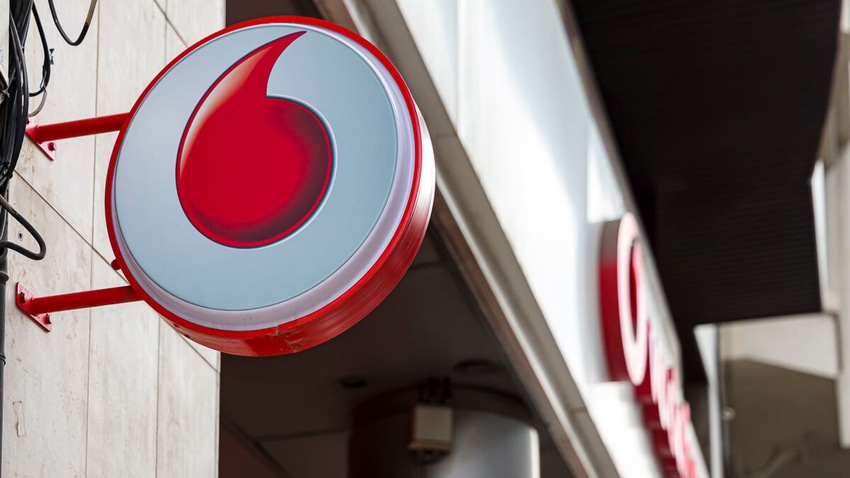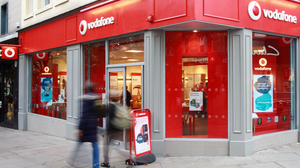Vodafone insists UK 5G is at risk without Three merger
A tie-up between the UK telcos would help close a £25 billion 5G funding gap identified in a recent report, says Vodafone UK's chief network officer.

Dedicated followers of the Prince of Wales could last year watch him crowned King Charles III via an equally faithful 5G service provided by Vodafone. Through a much-ballyhooed technique called "network slicing," the UK mobile network operator (MNO) was able to guarantee a royal service to ITN, a UK broadcaster, for the transmission of footage to its London newsroom.
It's a benefit of "standalone 5G," a version of the technology sometimes promoted as "real 5G," and an example of what Vodafone pitches as its "telco to techco" transformation, an effort to go beyond providing basic connectivity for smartphones. But Vodafone freely admits its 5G standalone network today is unavailable outside "pockets" of the country.
A vibrant, nationwide market of these "real 5G" services might never materialize without a merger between Vodafone and Three, the smallest of the UK's four mobile networks, according to Andrea Dona, Vodafone UK's chief network officer. The concern for him and his colleagues is that UK authorities decide to block the proposed deal – or stipulate conditions so harsh they defeat its entire purpose.
Dona's remarks come days after the publication of a troubling report by Mobile UK, a lobby group for the UK industry. It argues the UK is facing a £25 billion (US$31 billion) funding gap "integral to the rollout of advanced 5G standalone networks." Written by White Hawk Green, a self-described investment company, it was judged "mostly OK" by Dean Bubley, the founder of Disruptive Analysis. "It's expectedly MNO-centric and ducks issue of 'advanced wireless' being much more than public 5G, but makes some decent points on spectrum licenses, demand from public sector, planning process etc," he wrote on Twitter.
Mobile UK, which seeks to represent the common interests of the four networks, does not advocate consolidation in its report as a remedy for this gap. But Dona seizes on it. "It all boils down to investing money to connect this stuff," he told Light Reading during an interview at the FutureNet World 2024 event in London this week. "Without the merger, and without the scale the merger gives us, we are just going to be regionalized and marginalized. So all this promise the whole sector wants won't materialize."
'Emerging duopoly'
Both Vodafone and Three have insisted that as separate companies their return on capital employed (ROCE) is lower than their weighted average cost of capital (WACC). Ofcom, the UK telecom regulator, appears to agree. A report it published in early 2022 showed the two operators were below the required threshold in 2019 and 2020 (later data was not provided). "If ROCE was to fall, or was expected to fall, below the cost of capital for a sustained period of time for any MNO, this could dampen its incentive to invest," said Ofcom.
That seems like a strong endorsement of the telco position by an official UK body. To emphasize the point, Vodafone and Three have subsequently departed from the standard company convention of championing strengths and instead been highlighting their weaknesses. Three stopped expanding 5G population coverage in late 2022, when it hit about 62%, revealed Iain Milligan, its chief network officer, in February, saying the deployment cost is "huge." Weeks later, Three presented its first operating loss since 2010 as justification for a merger.
Dona is naturally on the same page. "It is an emerging duopoly in the UK, whether people like it or not," he said with a nod to BT, the incumbent, and Virgin Media O2, the company created when cable operator Virgin Media and mobile operator O2 were given permission to combine their assets. "There are only two players with the scale to invest to a level the UK deserves."
But like any big merger, this one is not without controversy. A drawn-out investigation by the Competition and Markets Authority (CMA) has already highlighted the risk that less competition results in higher prices for customers. Mobile UK's headline numbers about an investment gap, along with spending promises issued by Vodafone and Three, suggest a tie-up will do little to plug the hole.
The industry today spends about £2 billion ($2.5 billion) annually on infrastructure, according to the lobby group, while Vodafone and Three have said they will invest £11 billion ($13.7 billion) in capital expenditure over a ten-year period if allowed to merge. Annualized, that works out at £1.1 billion ($1.4 billion), but this is £400 million ($498 million) less than combined capex at Vodafone and Three for 2022, the year before they announced their merger plans (although Three did slash its capex last year by 39%, to �£454 million ($565 million)).
The logic, of course, is that £1.1 billion channeled into a single business is better than £1.5 billion ($1.9 billion) split between two. Today, Vodafone boasts about 19,000 sites and Three has around 18,000. Under publicly disclosed plans, the combined entity would dispense with about 11,000 but still have a much denser network of 26,000 sites than any UK telco has previously had. It would also collect money from about 29.2 million customers, based on recent figures, up from the 18.6 million Vodafone formerly served.
Competitors are known to be unhappy. Vodafone-Three would hold about 59% of all licensed spectrum in the midband, the sweet spot for 5G services. Besides having several thousand more sites than either BT or VMO2, it would also have a foot in both MBNL and Beacon, the UK's two network-sharing ventures (MBNL comprises BT and Three, while VMO2 and Vodafone collaborate through Beacon). Stringent remedies, such as carving out spectrum for a new entrant (which authorities in other countries have done), would undermine the deal logic, says Dona.
Standalone holdup
Up for debate, meanwhile, is whether funding needs rather than technology challenges are the main impediment to the rollout of 5G standalone networks. "Standalone as a technology requires a relatively big core upgrade," said Fredrik Jejdling, the head of Ericsson's networks business. "From a RAN [radio access network] perspective, it is more software-driven, honestly." The RAN is where operators spend the bulk of their network capex.
Vodafone should certainly be able to use many of the radio units it has deployed for non-standalone 5G, the version hooked to its 4G core. "You need to software-enable them, depending on the generation. In some cases, you need to swap them out," said Dona. "And then, obviously depending on which frequency you decided to use for standalone, you may have to swap."
The problem is the lack of any upgradable 5G network across swathes of the country. A smartphone supporting ordinary data services on non-standalone 5G can usually fall back on 4G without disruption, relying among other things on the older generation for the uplink signals that devices routinely send. Because standalone removes this 4G uplink option, 5G needs to have been extensively deployed to support wide-area services. "Most people don't have the coverage," said Gabriel Brown, a principal analyst with Heavy Reading (a Light Reading sister company), back in September 2022. "To get that is a really big investment and takes time."
Eighteen months on, UK coverage has obviously improved, but it remains well below 4G levels (BT, the market leader, now claims to cover almost 75% of the population with non-standalone 5G, versus at least 99.6% on 4G). And falling back from standalone to non-standalone 5G is simply not an option for network slicing. "If you drop down, you don't have a guarantee anymore," said Dona. This, he explained, is why Vodafone is not in discussions with the likes of GXO Logistics about a nationwide offer.
The other concern is whether services based on standalone 5G, including the use of network slicing, will be as critical to economic growth as some telcos make out. If there were obvious pent-up demand, investments would arguably have happened already. Some executives are losing patience. "When it comes to 5G and business cases, I am extremely disappointed with the technology itself," said Jaime Tatis, the chief insights officer of Canada's Telus, during a panel session at FutureNet. Business needs for lower latency and higher speeds have not emerged, he added.
But a coronation broadcast would not have been doable at such low cost to ITN without it, insists Dona. "You don't have to roll out all this fiber. You don't have to have four vans and have a cluttering of vans in front of the palace. And they were doing satellite uplink. You need a dish on top of a van – you can't break the laws of physics – and it has to be parked close to where it is happening." Some of what broadcasters save on all that is conceivably new revenue for Vodafone.
It has made a commitment to cover 95% of the UK population with a 5G standalone network by 2030 – hitting 99% by 2034 – if the CMA blesses its planned merger with Three. No decision is likely to meet with the market's unanimous approval. But if a tie-up does go ahead, Dona and his colleagues will soon be under pressure to show that standalone 5G really is everything they promised.
Read more about:
EuropeAbout the Author(s)
You May Also Like












